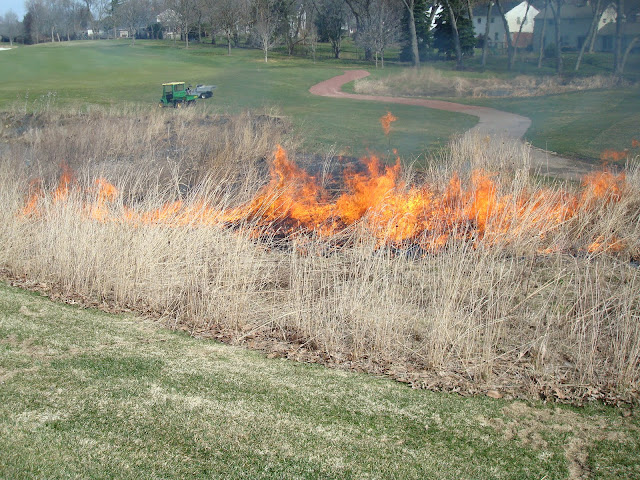No April Fools Joke! Thursday, April 1st, the course will be ready! Carts will be available, the driving range and chipping green will be open, and the halfway house will be open. The abnormally warm weather has been good to the course. The soil temperatures are rising quickly, and the grass is beginning to grow. The partial crew we have had this week have gotten lots done, but still have more to do.
The spring flowers have arrived and are in place for the Easter weekend.


The spring flowers have arrived and are in place for the Easter weekend.
We have started our first round through the bunkers this year. This job normally takes a few days to ready the bunkers after the winter neglect. This job involves cleaning out the debris that has entered the bunker, then removing any soil that has settled at the bottom of the bunker. After the contamination is removed, the sand is replaced from any washouts, then raked.
The course supplies are back on the course. The benches, trash cans, ball washers and tee markers are back at home on the tees. And, signs and target posts are back out.
Wednesday we made an application of gypsum to the fairways. If you are out on the fairways this week, the white material on the fairways is the gypsum.

This material will break up quickly and shouldn't be very noticeable after a mowing. The white streaks in the fairway are from the dust from this products.

Gypsum is calcium sulfate, and we use it to supplement our soil which is a little deficient in calcium.






































